
Experience it in game
Play through the battle yourself in the immersive Company of Heroes 3 campaign.
 Experience the dynamic campaign in game with
Experience the dynamic campaign in game with 
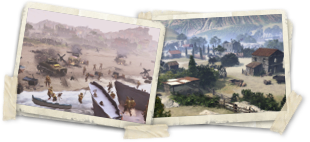 Find out more
Find out moreWith the Mediterranean Sea at their back, and surrounded on three sides by Axis forces, Allied soldiers were forced to hold out for eight months during the Battle of Tobruk.
A global fighting force comprised mainly of Australian and British soldiers endured an onslaught of aerial shelling, hard fighting, and the unforgiving elements.
Today, this siege is synonymous with the courageous and resilient ‘Rats of Tobruk’, who stopped the city from falling into enemy hands. Some of the heroic deeds carried out by these defiant fighters – including the famous Australian soldier Tom Derrick – have become etched into the history books, and continue to capture imaginations to this day.
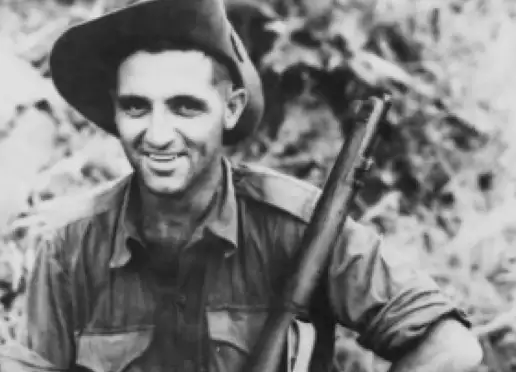
Sergeant Derrick, November 1943
The legend of these troops was forged in a strategic port in the battle for North Africa. The Libyan city of Tobruk, close to British-held Egypt, became an important destination for both sides during World War Two.
Highly contested, it had only recently been seized from the Italians by the British army in 1941, before a surprise German counterattack forced the Allied forces to retreat behind its defences.
The Australian 9th Division and the other Allied soldiers left in Libya fell back to Tobruk, where they were instructed to hold the city fortress for eight weeks. Nearly eight months later, they were still defending the city.
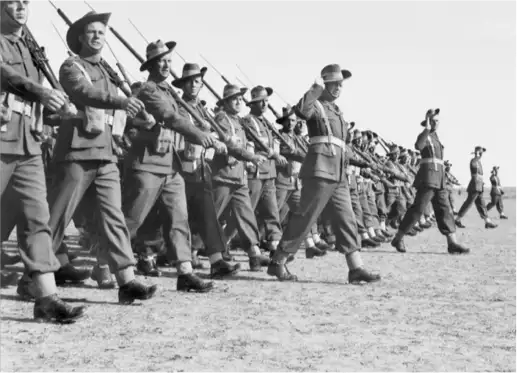
The 9th australian division at gaza airport being praised for their part in the battle
Did you know?
“Lord Haw-Haw” was an American-born fascist who lived in Ireland and England before moving to Germany, where he broadcast propaganda during the Second World War. Captured at the end of the conflict, he was hanged on 3rd January 1946 – the last person to be executed for treason in the UK.
The roughly 27,000 soldiers at Tobruk came from a handful of countries spread across the globe.
The majority were Australian troops from the 9th Division, comprising approximately 14,000 individual soldiers. Around 10,000 of the Allied soldiers who fought at the siege of Tobruk were British, while the remaining 3,000 or so came from New Zealand, India, Poland, and what was then Czechoslovakia.
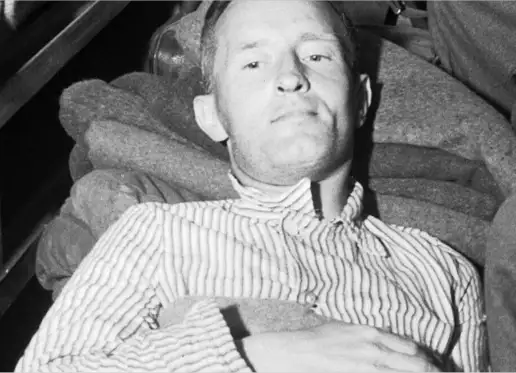
Did you know?
Morshead’s tactics and strategy during the siege of Tobruk are still mentioned in officer training colleges today. His actions are demonstrated as examples of how to organise and execute thorough defences against superior armoured enemy forces.
Whether the Australian soldiers at Tobruk felt they had something to prove or not, their efforts ultimately left an enduring mark on Australian consciousness.
After months of holding out, the majority of the 9th Australian Division were relieved and replaced by the British 70th Division. While the siege continued for a few months more, many of these original Rats of Tobruk found themselves redeployed in the Battles of El-Alamein, and following that to the conflict in Asia, before the survivors were finally able to return home as heroes.
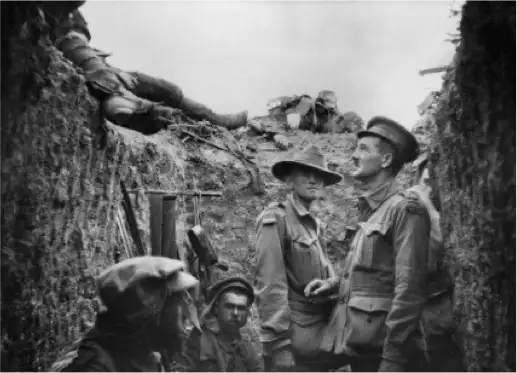
©Relic Entertainment. All rights reserved. Developed by Relic Entertainment. Entertainment, the Relic Entertainment logo, Company of Heroes and the Company of Heroes logo are either registered trademarks or trademarks of Relic Entertainment. Relic Entertainment is registered in the U.S. Patent and Trademark Office. All other trademarks, logos and copyrights are property of their respective owners.